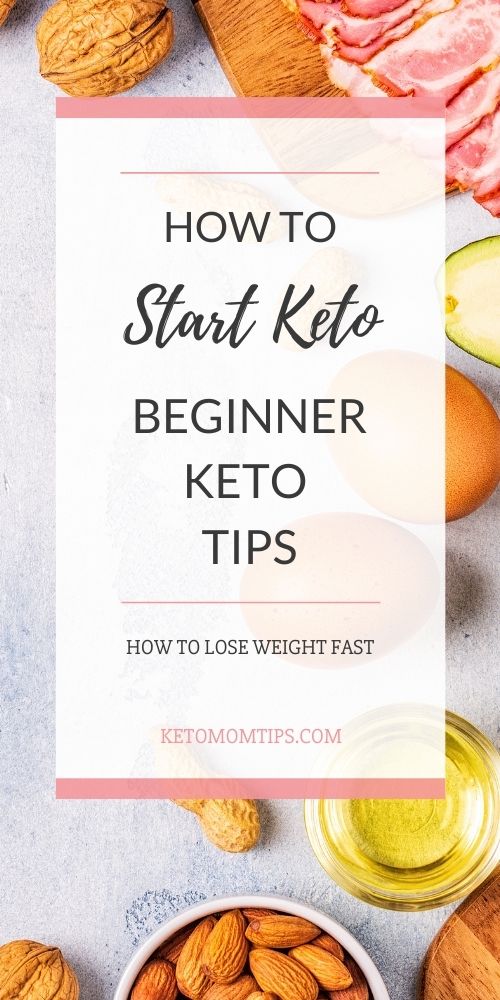How to Start Keto Diet
Discover my tips for how to start keto diet.
4 Steps to Getting Started on Keto
Luckily, once you understand where to start, this process does not need to feel difficult. In fact, the more you simplify your approach, the better off you will be, and the fewer mistakes you’ll make.
Step 1 - Determine Your Fitness Goal
Before going into any diet, the first step should always be identifying your “why” or your primary goal - this will establish your dietary needs and guide your focus moving forward.
There are 3 main reasons:
1) Weight loss 2) Muscle Gain 3) Improved Health
Weight loss the most common reason. If this is your goal, maintaining a calorie deficit is your number one focus.
Muscle gain is essentially weight gain and is not always the ideal starting place for everyone. Also, a ketogenic diet may not be the best diet for building muscle, given the beneficial role of carbohydrates in training, and muscle recovery.
But that doesn’t mean you won’t see results.
Improving health is not always a primary goal of keto dieters - unless health is improved as a result of losing weight. This is because a keto diet is fairly restrictive, and getting high amounts of vitamins and minerals (micronutrients) can be challenging.
However, emerging research continues to look at the potential benefits of low carb and keto diets for individuals with diabetes.
Step 2 - Calculate Your Keto Macros
While it is your calorie control that has the largest impact on your weight, understanding your keto macros is still pretty fundamental to your success. Especially if you are trying to get into ketosis, hitting your carb goal each day is crucial.
The keto diet is designed to follow strict macronutrient targets, including high fat and extremely low carb intake. For most people, this breakdown looks something like the following:
70% of calories from fat
25% of calories from protein
5% of calories from carbs
However, the exact ideal macro ratio for you can be dependent on your fitness, metabolic efficiency, and other individual considerations.
Calculate your personal keto macro needs using this simple online keto macro calculator.
Step 3 - Plan Your Keto Menu
Now you're ready to start planning your dream keto menu. But before you start loading up on bacon and cheese, there are a few things to consider when it comes to your food choices.
The nutrition and quality of the foods you eat are still important for your overall health and wellbeing. Additionally, choosing more nutritious foods may help with energy levels, mood, and potentially cravings - helping you stick to your ketogenic diet longer.
What to Eat on a Keto Diet
Keto emphasizes higher fat intake and little carb intake. This can make meal planning challenging since a large number of high carb foods are not considered keto-friendly - like grains, breads, starchy veggies, and fruits.
Additionally, carbs tend to be the bulk of most people's diets - meaning you have to find a keto alternative or change the way you think about meals in general.
Help keep your nutrition in check, have the bulk of your keto diet should consist of nutrient-rich low carb veggies, quality proteins, and healthy fats to ensure you are getting the right balance and overall good nutrition to keep you going.
If you enjoyed these tips and would like to keep it close to you at any time, just save this pin to your Keto Pinterest Board.

How do I start a ketogenic diet to lose weight?
Know What Foods You'll Eat and Avoid on the Ketogenic Diet. ...
Examine Your Relationship With Fat — Keto Involves Lots of It! ...
Switch Up Your View of Protein — This Is a Moderate-Protein Diet. ...
Hone Your Cooking Skills to Make Fresh Fare, as High-Carb Processed Foods Aren't Okay on Keto.
What is the easiest way to eat Keto?
Tips for cutting back on carbs and sugar.
Stop eating all breads of any kind.
Eat vegetables instead of grains.
Add extra butter and salt for a rich, satisfying meal experience.
Replace sugar cravings with your favorite fat bomb recipes. For example, my go-to recipe is this Chocolate Chip Cookie Dough Fat Bomb recipe.
How long does it take a beginner to get into ketosis?
In general, it should take you 2–4 days to enter ketosis. However, some people may find they need a week or longer. The time it takes depends on various factors, such as your age, metabolism, exercise level, and current carb, protein, and fat intake.
How to Start Keto Diet Related Pages
Keto Cheat Day
All about the keto cheat day.
What to do on a Keto Diet
Learn what you need to do to be successful at Keto.
Learn About the Health Benefits of Keto
What do you benefit by doing keto. Learn how Keto can improve your health.
Is a keto diet Safe?
Learn how safe the keto diet is. Or is it? Understanding how to start keto diet is important to your success on keto.
How Healthy is Keto?
Learn about pros and cons of Keto.
What's the Carb Limit for Keto?
Discover how the carb limit will vary depending on various factors.
Are Net Carbs Important for Keto?
Learn about net carbs and how they factor in on the Keto Diet.